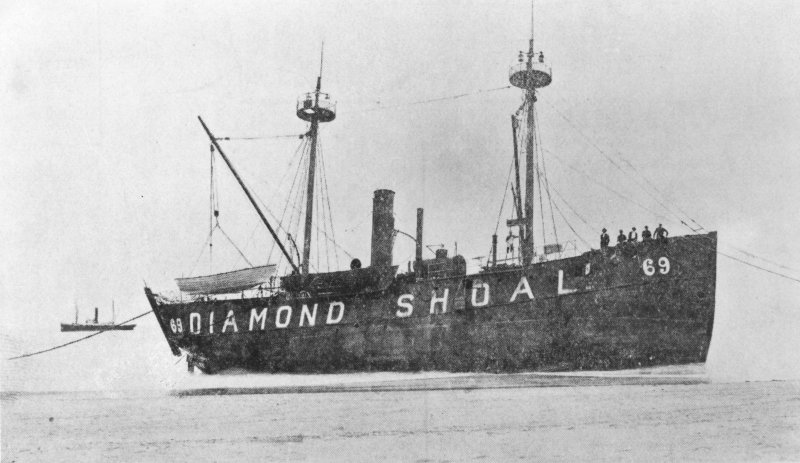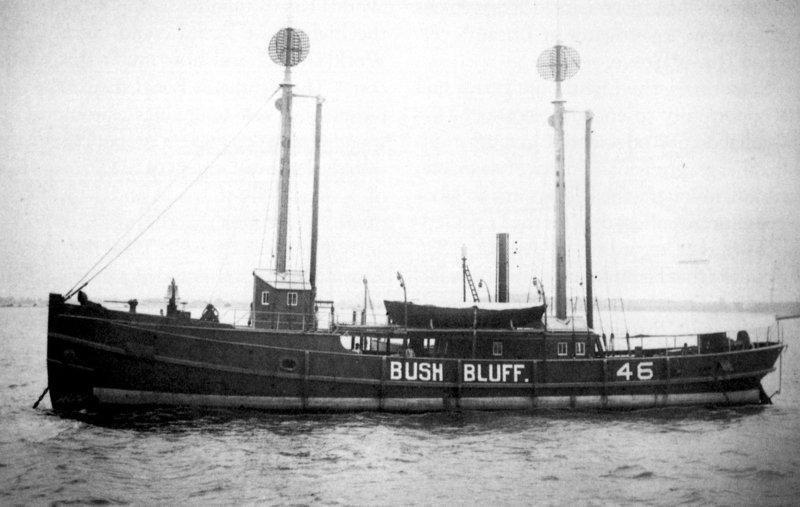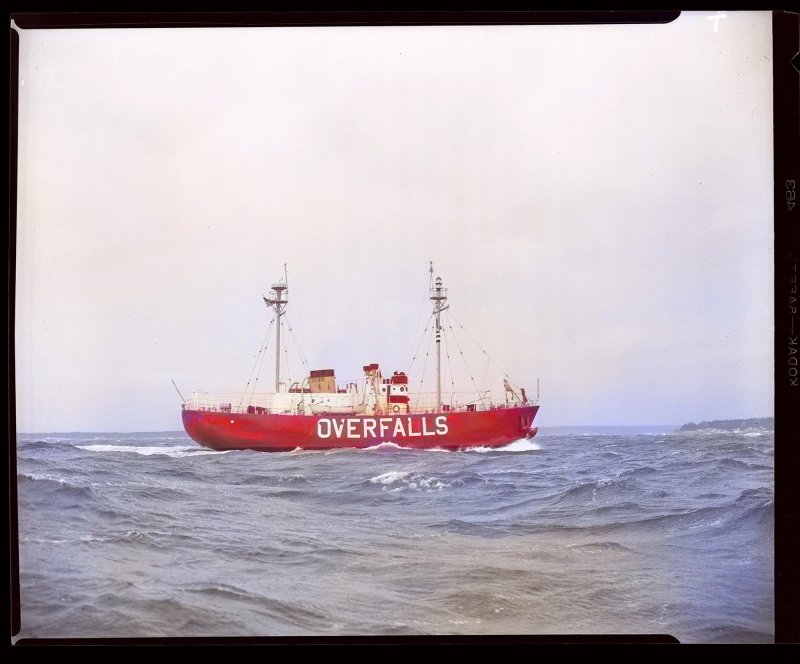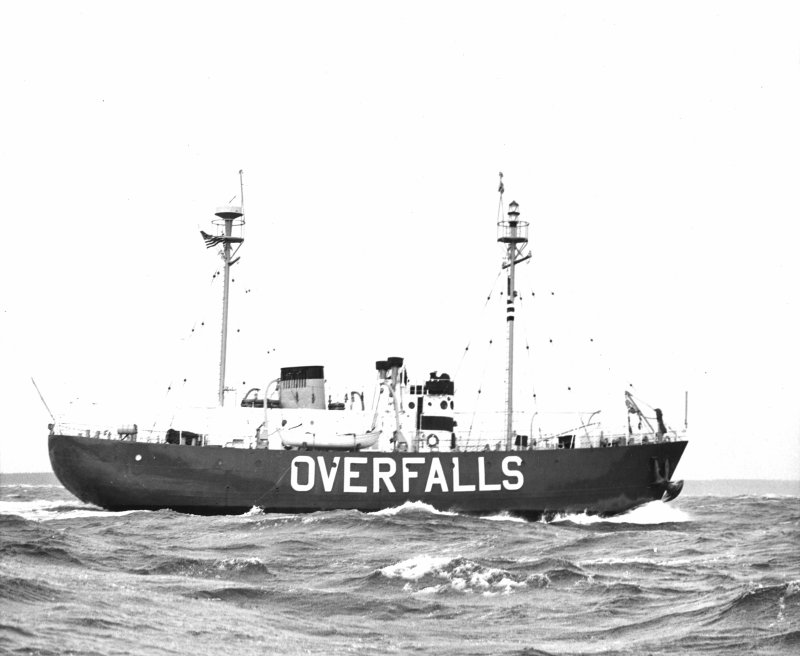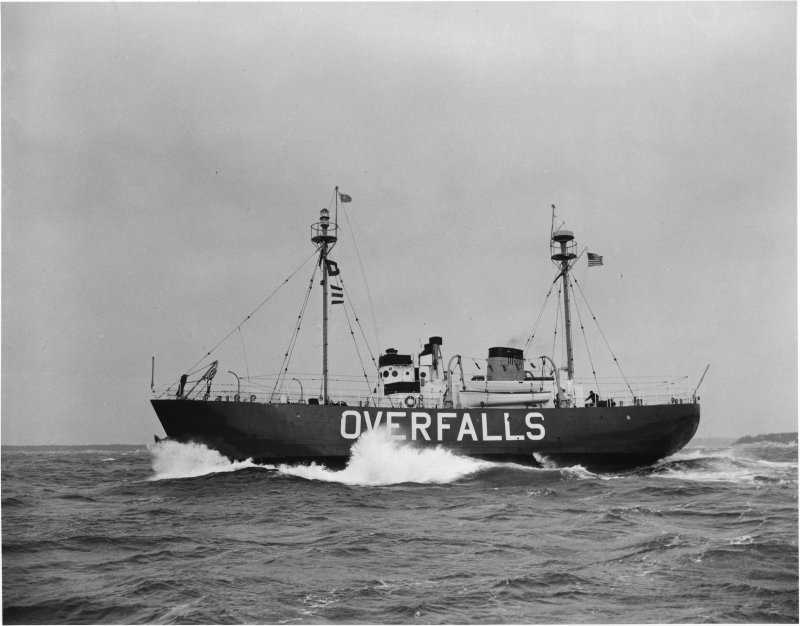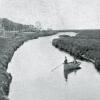Lightship Overfalls played important role in American history
When the Chesapeake and Delaware Canal opened in 1829, the port in Philadelphia — and Wilmington — became much more important for the shipping community because the canal connected the Chesapeake Bay with the Delaware River.
Marking the oceanside entrance to the bay about 3.5 miles from the Cape Henlopen Lighthouse was the Lightship Overfalls, named for the Overfalls Shoal. According to “Lightships: Floating Lighthouses of the Mid-Atlantic” by Wayne Kirklin, the station was established Dec. 2, 1898, and served by four different ships during its history. LV-46, a 124-foot, schooner-rigged sailboat, served from 1898 to 1901. Then until 1925, the station was covered by LV-69, a ship with a coal-fired steam engine and a sail. No information is available about the ship’s length. After that, LV-101, a 102-foot, self-propelled steel whaleback vessel, took over until 1951. That ship is now known as the Lightship Portsmouth and resides at the Portsmouth Naval Shipyard Museum in Portsmouth, Va. The final ship at the Overalls station was WLV-605, a 128-foot, diesel-powered vessel, one of six lightships built by the U.S. Coast Guard. It served at the station until it was discontinued in 1960. WLV-605 is now known as Lightship Relief and is berthed in Oakland, Calif., as a museum for the U.S. Lighthouse Society.
The ship that sits at Canalfront Park in Lewes did not serve at the Overfalls station; however, it is one of the lightships built by the U.S. Lighthouse Service. According to the Overfalls Foundation, the ship was built in East Boothbay, Maine, in 1938. It was the last lightship commissioned by the U.S. Lighthouse Service and the last built with a riveted construction. One year after the ship was commissioned, in 1939, the Lighthouse Service and all of its assets were merged into the U.S. Coast Guard, meaning for almost all of the ship’s service life, it was a Coast Guard ship with uniformed Coast Guard crews aboard.
From 1938-57, the ship served at Cornfield Point in the east end of Long Island Sound off Old Saybrook, Conn. In 1958, it was moved to Cross Rip near Martha’s Vineyard just south of Cape Cod, Mass. In 1962, the ship was reassigned to the Boston station six miles east of the lighthouse marking the entrance to Boston Harbor, where it stayed until being taken out of service in 1972. In 1973, the Coast Guard donated the ship to the Lewes Historical Society to serve as a floating museum. It received a new name, Overfalls, in honor of the lightship station closest to Lewes at the mouth of Delaware Bay.
In 1988, the U.S. National Park Service listed the Overfalls in the National Register of Historic Places. In 2011, the National Park Service designated the Overfalls a National Historic Landmark.
